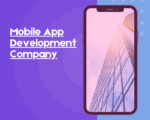Why Choose React Native for Mobile App Development?

In the ever-evolving domain of mobile app development, choosing the right framework is akin to selecting the perfect tool for a masterful creation. Enter React Native, a powerhouse in the tech world that has been revolutionizing the way we bring our app ideas to life.
Why opt for React Native, you ask? From its ingenious cross-platform capabilities to its native-like performance, React Native is not just a framework; it’s a game-changer that’s reshaping the narrative of app development.
Thanks to its ability to create native-like user experiences, React Native has won widespread favor with developers across the world.
Today, we will unravel the layers of React Native’s versatility, exploring how it streamlines development, enhances user experiences, and opens doors to a world of innovation. It’s more than about writing code. For passionate programmers, it’s about crafting digital experiences that seamlessly traverse platforms.
So, tech aficionados, get ready to discover why React Native is the beating heart of the future in mobile app development!
Introduction to React Native
React Native is an immensely popular open-source framework for mobile app development created by Facebook that enables developers to quickly build cross-platform apps with JavaScript.
By taking advantage of React Native, developers can combine the best aspects of native development with the efficiency and flexibility of web development. This saves both time and effort when writing code that runs across both iOS and Android platforms simultaneously.
Brief History and Background Information
React Native was first unveiled by Facebook (now called Meta) in 2015 and quickly rose in popularity among mobile developers.
Born out of the need to build apps that provided native performance and user experience while optimizing code reuse, React Native quickly evolved with community contributions into a mature framework for mobile development.
Benefits of React Native for Mobile Development
Faster Development Time
Developers can significantly cut development times down with React Native by taking advantage of its code reuse capabilities across platforms.
Hence, the code is needed just once and can be used by both iOS and Android. This shortens development cycles and improves time to market.
Cost Saving
React Native is an efficient solution for businesses looking to develop mobile applications on a tight budget. Through code reuse and fast development cycles, companies can allocate their resources more effectively.
Sharing a single codebase among platforms requires fewer developers than creating multiple native apps on different platforms like iOS or Android.
Code Reusability
React Native’s main advantage lies in its code reusability between platforms, enabling developers to write once and deploy on multiple platforms with just a single codebase. This greatly streamlines the development process while making future updates simpler to maintain and update apps.
Cross-Platform Compatibility
Write Once and Run Anywhere
React Native is a versatile platform that enables developers to write code that runs on both iOS and Android platforms simultaneously, saving both time and effort by eliminating separate code bases for each platform. Writing once and running anywhere has greatly simplified development processes while increasing efficiency.
Access to Native Application Programming Interfaces (APIs)
React Native provides developers with seamless access to native APIs and components, enabling them to build apps with the appearance and feel of native applications without compromising performance or user experience.
Developers can take full advantage of features such as camera access, push notifications, and geolocation without compromising user experience or performance.
Optimizing Reusability of Code
Component-Based Architecture
React Native is designed around its component-based architecture, making it easier for developers to construct and manage complex apps. Components serve as reusable building blocks that can be combined together to form the app’s user interface.
This modular approach not only ensures code reuse but also increases maintainability by making updates easier – with updates or modifications happening only to specific parts of an app at any given time.
Hot Reloading for Instant Feedback
React Native’s hot reloading feature enables developers to instantly see changes made to code reflected in an application without having to rebuild it from scratch. This greatly expedites the development process and gives instantaneous feedback, making it simpler and faster for iterative refinement of apps.
Integration of Third-Party Libraries
React Native offers developers access to an expansive ecosystem of third-party libraries and plugins they can utilize to augment the functionality of their app. These libraries cover everything from user interface components and networking features all the way to state management. Ultimately, this makes development quicker while increasing code reuse rates.
Enhancing User Performance and Experience
One of the primary draws to React Native for mobile development is its native performance capabilities. React Native is unique among cross-platform frameworks in that its rendering uses native APIs of each platform, giving developers an app with performance that feels and looks just like native apps without compromising speed and speed.
An Intuitive and Responsive User Interface
React Native makes creating user interfaces easy. React Native utilizes “just-in-time” compilation technology, enabling it to update components instantly without the need for full app reloads.
This means your changes are visible immediately, speeding up development processes while making development faster and more efficient.
Memory Management Best Practices
Memory management is key for mobile app performance, and React Native excels at it. Thanks to its virtual DOM (Document Object Model), React Native updates only the necessary components when changes arise.
This minimizes memory consumption, leading to smaller memory footprints and improved overall app performance.
Native-Like User Experience
React Native excels when it comes to user interface/user experience by offering a consistent and native-like look and feel across platforms.
By employing native UI components, React Native ensures your app abides by each platform’s design guidelines – meaning users will enjoy a familiar and intuitive experience when engaging with your app.
Accessing Native Components
React Native allows you to access platform-specific native components, giving you the flexibility to incorporate any unique functionality or design elements specific to a platform while still reaping the advantages of cross-platform development.
This means you can take full advantage of every platform’s strengths while reaping cross-platform development benefits.
Robust Community Support and Resources
Engaged Developer Community
React Native is home to an engaged developer community that contributes to its development and improvement.
You’ll gain access to an abundance of knowledge, resources, and support from fellow React Native developers. Whether it is troubleshooting an issue or looking for best practices, these developers are there to provide invaluable advice.
An Exactitude of Open-Source Libraries and Tools
React Native is also attractive due to the extensive library and open-source tool options, providing developers with fast development speeds, enhanced app functionality, and ways to address common challenges.
You’re sure to find exactly the tools needed for an efficient development process with spectacular results!
To Sum Up
React Native is an attractive solution for mobile app development. Its ability to deliver native-like performance, provide an engaging UI/UX, and boast strong community support make it a standout.
React Native makes creating high-quality cross-platform apps easy; its unique combination of performance, user experience, and community support makes it the obvious choice for developers of any complexity level. So, if performance, user experience, and community support are important to you – React Native should be your go-to framework!
Dive into a sea of unparalleled tech knowledge with TeCuriosity! Subscribe now to unlock the vault of our expert insights, tips, and the latest in cutting-edge information. When it comes to staying ahead, TeCuriosity is your compass in the vast landscape of knowledge. Subscribe today!
FAQs
React Native is well-suited to a range of mobile apps. It is particularly advantageous when used for apps that require cross-platform compatibility, efficient code reuse, and native-like user interfaces.
For apps relying heavily on complex animations or specific hardware requirements, however, a fully native approach might be more suited.
Yes, React Native gives developers access to native APIs and device features. It enables developers to integrate native modules written in Java, Objective-C, or Swift into their codebase when needed – taking full advantage of platform-specific functions when necessary. This flexibility ensures developers can tap into all capabilities offered by mobile platforms.
React Native is an appealing mobile development framework with several advantages over its counterparts, particularly hybrid frameworks like Cordova or Ionic.
React Native offers more native-like performance and user experience compared to these hybrid solutions. It has better code reusability as you can share parts of it between platforms. It also has an expansive ecosystem of libraries and tools, which contributes to its popularity while providing ample resources for developers.












